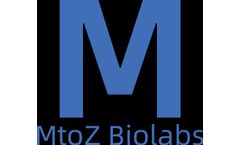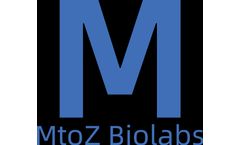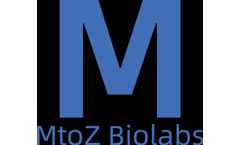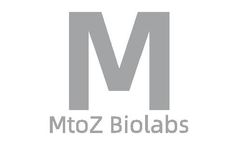Drug Efficacy Chemical Structure Of Drug Articles & Analysis: Older
61 articles found
Knockin cell line generation represents a pivotal advancement in genetic engineering, providing vital tools for biological research and therapeutic development. This process involves the integration of specific DNA sequences into precise loci within the genome, allowing scientists to explore gene function, model diseases, and develop new treatments. Understanding Knockin Cell Line Generation At ...
Obesity is a significant contributor to respiratory disorders such as Obesity Hypoventilation Syndrome (OHS) and sleep apnea, both of which are characterized by reduced respiratory chemosensitivity. These conditions not only impair breathing but also exacerbate the health risks associated with obesity. Recent research from Rivera (2024) investigates the potential of setmelanotide, a ...
Liposomes, spherical vesicles composed of one or more phospholipid bilayers, have garnered significant attention in the field of drug delivery due to their unique properties. These nanocarriers offer a promising approach to overcome challenges associated with traditional drug administration, enhancing therapeutic efficacy while minimizing side effects. This article will delve into the role of ...
Medical advancement relies on clinical trials, which are essential for the development of safe and effective innovative treatments. However, the success and general applicability of these treatments heavily depend on the diversity of the participants involved¹?³. This blog explores the importance of achieving data diversity in clinical trials to enhance clinical trial results and ...
Peptidomimetics are structural analogs of peptides or proteins that mimic their biological activities. They are designed to overcome limitations associated with peptides, such as poor stability and bioavailability by preserving or enhancing their functions. Peptidomimetic development involves the design and synthesis of molecules that mimic three-dimensional structures and functional groups of ...
The scientific realm behind the development and evaluation of therapeutic drugs, pesticides, industrial and environmental chemicals profoundly relies on a field of research called Pharmacokinetic/Toxicokinetic (PK/TK) studies. ...
Glycosylation impurities are a type of chemical commonly encountered in biochemical, medical, and pharmaceutical chemistry research. The presence of these impurities can affect the efficacy, safety, and stability of drugs. Therefore, the detection and analysis of glycosylation impurities are crucial in ensuring the quality and therapeutic effectiveness of pharmaceutical products.What are ...
In-depth research on protein interaction plays a crucial role in life science research. Proteins are the main bearers of life activities, and their interactions form a complex molecular network within biological cells. Protein-Protein Interaction Sequencing (PPI-Seq) is an emerging technology. Based on high-throughput sequencing, it allows researchers to explore protein interactions at the whole ...
Antibody-drug conjugates (ADCs) are a new class of drugs that combine the advantages of both antibodies and small molecule toxins. Compared with traditional cytotoxins, ADCs have the advantages of strong targeting, less toxic side effects, etc. They can accurately target tumor cells, reduce side effects, and improve the therapeutic effect.ADC drugs are mainly composed of monoclonal antibodies, ...
Dr. Kate Sasser from Tempus led a discussion on the potential of antibody-drug conjugates (ADCs), their challenges in targeting tumor antigens, and the future of cancer treatment with Dr. Daniel Johnson, Dr. Funda Meric-Bernstam, and Dr. Kellogg Parsons. The oncology field is rapidly advancing with the development of antibody-drug conjugates (ADCs), offering new hope for ...
ByTempus
Circular Dichroism (CD) uses the absorption properties of optically active substances to analyze the molecular structure of drugs. It has very valuable applications in drug analysis, including:1. Identification of Drug StereochemistryMany drug molecules are chiral, and their activity, metabolism, and toxicity can significantly differ due to stereochemistry. CD can differentiate the different ...
In the vast realm of drug discovery, the fusion of computational prowess and intricate molecular details has given birth to the revolutionary field of protein-small molecule docking. This innovative computational method delves deep into the complex molecular interactions between proteins and small molecules, paving the way for breakthrough advancements in therapeutic approaches and the era of ...
Host cell proteins (HCPs) are protein impurities produced by genetically engineered strains or cell lines. Some of these proteins are necessary for the survival, reproduction and other normal physiological activities of engineered strains or cell lines. HCPs are purified together with the target product during the production process and cannot be removed. Risks of HCPs In general, HCP ...
Antibody-drug conjugates (ADCs) represent a rapidly developing field within pharmaceutical biotechnology. ADCs are complex molecules composed of an antibody linked to a biologically active cytotoxic or radioactive compound. They combine the specificity of antibodies, which enables specific target cell binding, and the cell-killing activity of cytotoxic drugs, providing a method of delivering ...
Lipids are the basic substances that make up biological membranes. Through lipid-lipid interactions and interactions between lipids and other biomolecules, a complex network of lipid metabolism is formed, which is involved in a large number of life activities. By studying lipid extracts, information about the lipidome can be obtained. Lipidomics studies lipids in organisms at a systematic level, ...
SN38-BSA is a bioconjugate product that is effectively revolutionizing the field of drug delivery. This article focuses on understanding its makeup and how bioconjugation is instrumental in its function and efficacy. To begin with, SN38-BSA is composed of SN38, a potent anti-cancer drug, and BSA or Bovine Serum Albumin. SN38 is the active metabolite of the prodrug irinotecan, commonly used in ...
Radioactive drug conjugates (RDCs), as a particular form of coupling drugs, are formed by combining radioactive isotopes with disease-targeting molecules. ...
In order to more effectively deliver chemotherapy drugs, Small Molecule Drug Conjugates (SMDC), Antibody Drug Conjugates (ADC), and Degradation Antibody Conjugates (DAC) have been successively explored and developed, enhancing the therapeutic index while providing selective delivery. What are their similarities and differences? What are their respective advantages? What is the current status of ...
The field of medicine is constantly evolving, with researchers and scientists striving to find innovative ways to deliver drugs effectively and efficiently. One of the most promising technologies that has emerged in recent years is nanoparticle development for drug delivery systems. Nanoparticles are tiny particles with dimensions in the nanometer range, making them ideal for targeting specific ...
Introduction For years, scientists have leveraged the brilliant potentialities of genetic science to explore how cells function and interact in living organisms. Among the numerous tools employed are "reporter systems," which use a visible marker to track gene expression, protein interactions, and other vital biological processes. One such system employs reporter lentiviral particles, using the ...















